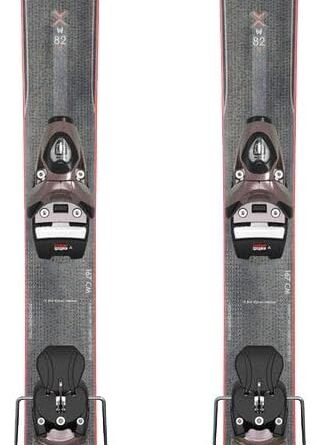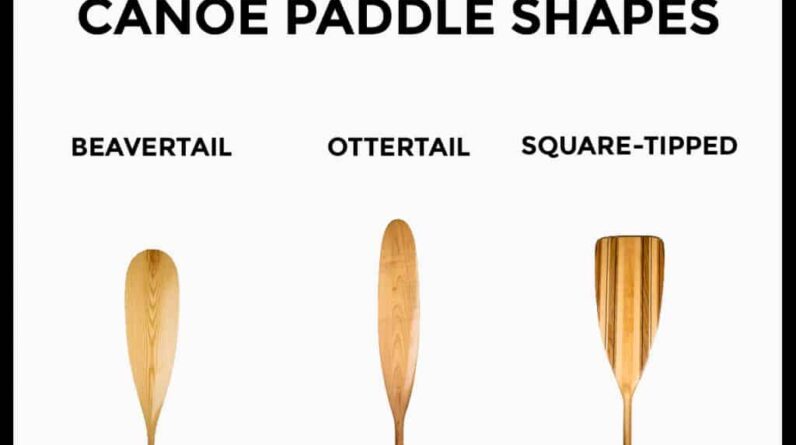
So, you’re thinking of embarking on a paddling adventure but you have one burning question: what sets a kayak paddle apart from a canoe paddle? Well, fret not! In this article, we will unravel the mystery and shed light on the distinction between these two essential tools for any water enthusiast. Hold on tight as we navigate through the key differences in shape, design, and technique, helping you choose the perfect paddle for your next aquatic expedition.
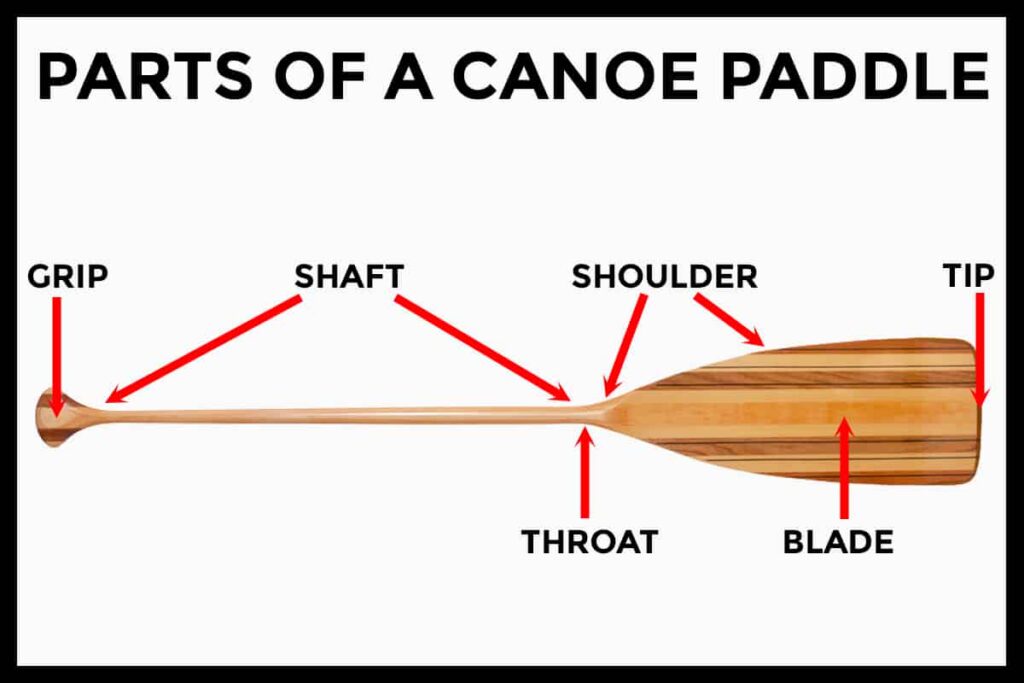
This image is property of paddlecamp.com.
Length
Kayak paddle length
The length of a kayak paddle is an important consideration when selecting the right one for you. Generally, kayak paddles range in length from 210cm to 240cm, but the optimal length for you will depend on various factors.
Factors such as your height, the width of your kayak, and your paddling style will all influence the ideal paddle length for you. As a general guideline, taller individuals or those with wider kayaks will require longer paddles to ensure effective propulsion and maneuverability. On the other hand, those with narrower kayaks or who prefer a high-angle paddling style may opt for a slightly shorter paddle length.
Canoe paddle length
Unlike kayak paddles, canoe paddles come in a wide range of lengths to accommodate different canoeing styles. The correct length for your canoe paddle will depend on your height, paddling style, and the width of your canoe.
For general recreational canoeing, a longer paddle is typically recommended as it allows for more leverage and control. However, if you are engaging in more aggressive paddling techniques such as whitewater or sprint canoeing, a shorter paddle may be preferred for quicker strokes and maneuverability.
Blade Shape
Kayak paddle blade shape
The blade shape of a kayak paddle plays a crucial role in determining its performance characteristics. Kayak paddle blades can vary in shape, ranging from symmetrical to asymmetrical designs.
Symmetrical blades are often seen in recreational kayak paddles and are a popular choice for beginners. They provide a balanced feel in the water and are forgiving for various paddling techniques.
On the other hand, asymmetrical blades, commonly found in high-performance kayak paddles, are designed to optimize efficiency and minimize resistance. These blades have a distinct shape with a more pronounced power face and a narrower back face. They excel in providing powerful strokes, making them ideal for advanced paddlers or those looking for increased speed.
Canoe paddle blade shape
Canoe paddle blade shapes also differ from kayak paddles and are tailored to the specific demands of canoeing. Canoe paddle blades are typically larger and broader, providing more surface area for effective propulsion.
The blade shape of a canoe paddle can vary depending on the canoeing style. For recreational canoeing, wider and flatter blades are commonly used as they help generate more power and control in slower-paced environments.
In contrast, narrower and shorter blades are often found in sprint canoeing, where speed is the priority. These blades allow for rapid stroking and reduced resistance, resulting in enhanced maneuverability and faster acceleration.
Shaft Design
Kayak paddle shaft design
The design of the shaft is an important aspect of a kayak paddle as it determines the overall comfort and control during paddling. Kayak paddle shafts can be straight or bent, each offering its own advantages.
Straight shafts are the most common and are favored by many paddlers due to their simplicity and versatility. They provide a reliable grip and are suitable for various paddling techniques and hand positions.
Bent shafts, on the other hand, have a slight ergonomic bend that allows for a more natural hand position, reducing strain and fatigue during longer outings. They are particularly popular among touring and long-distance paddlers who value comfort and efficiency.
Canoe paddle shaft design
Canoe paddle shafts also come in different designs to cater to the unique requirements of canoeing. Straight shafts are the standard option for canoe paddles, offering simplicity and compatibility with various paddling styles.
Some canoe paddle shafts may feature a T-grip handle at the top, allowing for greater control and leverage during powerful strokes. This design is especially beneficial for whitewater canoeing, where maneuverability and precise control are paramount.
Ultimately, choosing the right shaft design for your canoe paddle is a matter of personal preference and the type of canoeing you plan to engage in.
Tandem Use
Kayak paddle tandem use
Using a kayak paddle for tandem kayaking requires careful consideration to ensure optimal performance and compatibility. In tandem kayaking, two individuals are paddling together, and coordination is key.
For tandem use, longer kayak paddles are generally preferred as they allow for greater reach and better synchronization between the paddlers. Additionally, adjustable length paddles can be advantageous as they can accommodate paddlers of different heights and positions.
Canoe paddle tandem use
Canoe paddles are often designed with tandem use in mind, given the popularity of canoeing as a two-person activity. Tandem canoeing requires cooperation and synchronization between the paddlers, and the right paddle can significantly enhance the experience.
When paddling tandem in a canoe, it is common for each paddler to have their own paddle. This allows for greater control and versatility during various strokes and maneuvers. However, some canoes may have the option for a single canoe paddle that each paddler alternates using, allowing for a shared experience.

This image is property of www.wikihow.com.
Grip Style
Kayak paddle grip style
The grip style of a kayak paddle, also known as the shaft grip, can greatly affect comfort, control, and overall performance. There are two main grip styles for kayak paddles: straight shaft and ergonomic shaft.
Straight shaft grips are the traditional and most commonly used style. They provide a simple and consistent grip that allows for a variety of hand positions. This grip style is favored by many paddlers due to its familiarity and versatility.
On the other hand, ergonomic shaft grips have a contoured design that follows the natural shape of your hand. This provides a more comfortable and ergonomic grip, reducing strain and fatigue during longer paddling trips. Ergonomic grips are often preferred by paddlers who prioritize comfort, such as touring or recreational kayakers.
Canoe paddle grip style
Canoe paddle grip styles differ from kayak paddles, considering the unique demands of canoeing. Canoe paddles typically have a T-grip handle at the top of the shaft, allowing for a secure grip and greater control.
The T-grip handle is particularly beneficial in whitewater canoeing, where precise control and maneuverability are essential. It provides a comfortable and secure grip, enabling the paddler to execute powerful strokes with confidence. The T-grip handle also allows for quick and easy hand position adjustments, accommodating different paddling techniques.
For recreational canoeing or other canoeing styles, straight shaft grips may still be preferred by some paddlers due to their simplicity and compatibility with various hand positions.
Weight
Kayak paddle weight
The weight of a kayak paddle is an important consideration as it directly affects your endurance and paddling efficiency. Kayak paddles can vary significantly in weight depending on the materials used in construction.
Lightweight paddles are particularly advantageous for long-distance or extended paddling trips. They reduce fatigue and strain on your wrists and arms, allowing you to maintain a steady rhythm and paddle comfortably for longer durations.
However, it’s worth noting that lightweight paddles sometimes come at a higher price point, as they often utilize advanced materials such as carbon fiber or fiberglass composites. If you’re a beginner or occasional paddler, a slightly heavier paddle made from materials like aluminum or plastic may offer a more affordable option without compromising too much on performance.
Canoe paddle weight
Canoe paddle weight is another important factor to consider, especially for those embarking on longer canoe trips or engaging in more advanced canoeing techniques. The weight of a canoe paddle can vary depending on the materials used and the design.
Lightweight canoe paddles are favored by paddlers who value endurance and reduced fatigue during extended canoe trips. These paddles are often constructed with lightweight materials such as carbon fiber or fiberglass, optimizing performance without sacrificing durability.
For recreational canoeing or occasional paddling, slightly heavier paddle options constructed from aluminum or wood may still provide sufficient performance while offering a more budget-friendly choice.
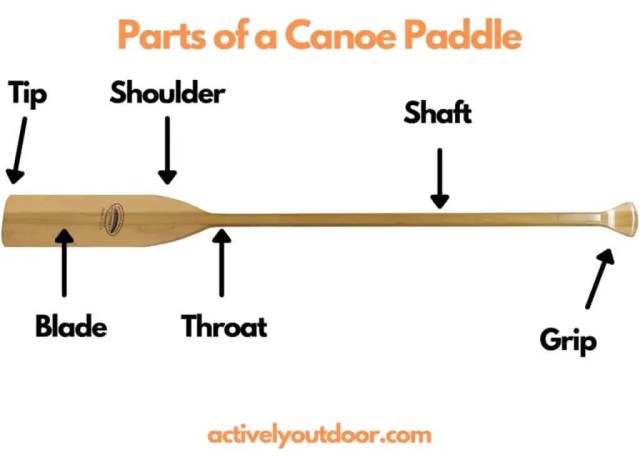
This image is property of i0.wp.com.
Paddle Strokes
Kayak paddle strokes
Learning and mastering proper kayak paddle strokes is essential for efficient and enjoyable paddling. While there are various paddle strokes to master, a few key techniques are fundamental to kayak paddling.
-
Forward Stroke: The forward stroke is the primary stroke used for moving your kayak forward. It involves reaching forward with your paddle, making a vertical entry into the water, and propelling the water backward.
-
Sweep Stroke: The sweep stroke is used for turning your kayak. It involves a wide, sweeping motion with your paddle to draw water past the kayak’s side, initiating a turn. The direction and intensity of the sweep stroke determine the degree of the turn.
-
Bracing Stroke: The bracing stroke is used for maintaining balance and stability. It involves placing your paddle blade flat on the water’s surface and applying slight downward pressure to counteract any tipping or rolling motion.
These three strokes form the foundation for most other kayak paddle strokes, such as reverse strokes, draw strokes, and sculling strokes. Learning and practicing these techniques will increase your efficiency and control on the water.
Canoe paddle strokes
Canoe paddling involves a different set of strokes compared to kayak paddling, each serving a unique purpose in maneuvering the canoe effectively.
-
J-Stroke: The J-stroke is the most essential stroke in canoeing, used for maintaining a straight course. It involves a combination of a forward stroke and a feathering motion at the end, creating a subtle turning force that counters the canoe’s natural tendency to veer off course.
-
Draw Stroke: The draw stroke is used for moving the canoe sideways or towards your paddle side. It involves placing the paddle blade parallel to the canoe’s side and pulling the water towards you. This stroke is useful for docking or maneuvering around obstacles.
-
Pry Stroke: The pry stroke is the opposite of the draw stroke, used for moving the canoe away from your paddle side. It involves pushing the water away from you, causing the canoe to move sideways in the opposite direction.
These fundamental canoe paddle strokes provide the building blocks for more advanced techniques such as the stern rudder, cross-bow draw, and bow draw strokes. Mastering these strokes will enhance your ability to navigate and control the canoe in various conditions.
Application
Kayak paddle application
Kayak paddles are designed to cater to a wide range of applications, making them suitable for different types of kayaking and paddling environments.
Recreational kayaking: Kayak paddles designed for recreational use are typically versatile and well-rounded, suitable for beginners and casual paddlers. They offer a good balance of performance, durability, and affordability.
Touring kayaking: Paddles for touring kayaking often prioritize efficiency and endurance. They are lighter in weight, feature ergonomic shafts for comfort, and may employ advanced blade designs for improved efficiency during long-distance paddling.
Sea kayaking: Paddles for sea kayaking may have specific features such as larger blades or adjustable lengths to contend with varying conditions and tides. These paddles need to provide power and control in potentially challenging environments.
Fishing kayaking: Kayak paddles designed for fishing applications may have additional features such as built-in measurement markings, retrieval hooks, or even rod holders. These paddles prioritize functionality and convenience for anglers.
Canoe paddle application
Canoe paddles are tailored to accommodate the specific needs of canoeing and its various applications and styles. The type of canoe paddle you choose will depend on the type of canoeing you plan to engage in.
Recreational canoeing: For casual or recreational canoeing, a versatile paddle that provides good power and control is typically sufficient. Paddles with wider, flatter blades are a popular choice as they offer more surface area for effective strokes.
Tripping canoeing: Canoeing on extended tripping adventures calls for paddles that provide both power and endurance. Lightweight options made from materials like carbon fiber or fiberglass are favored by tripping canoeists, as they reduce strain and fatigue during longer outings.
Sprint canoeing: Sprint canoeing involves racing and requires paddles with specialized designs. Paddles with narrower blades and shorter shafts are commonly used to optimize quick and powerful strokes needed for speed.
Whitewater canoeing: When tackling whitewater rapids, paddles with durable construction and enhanced maneuverability are essential. Canoe paddles designed for whitewater encounters often have reinforced blade edges and sturdy shafts to withstand the demands of turbulent water.
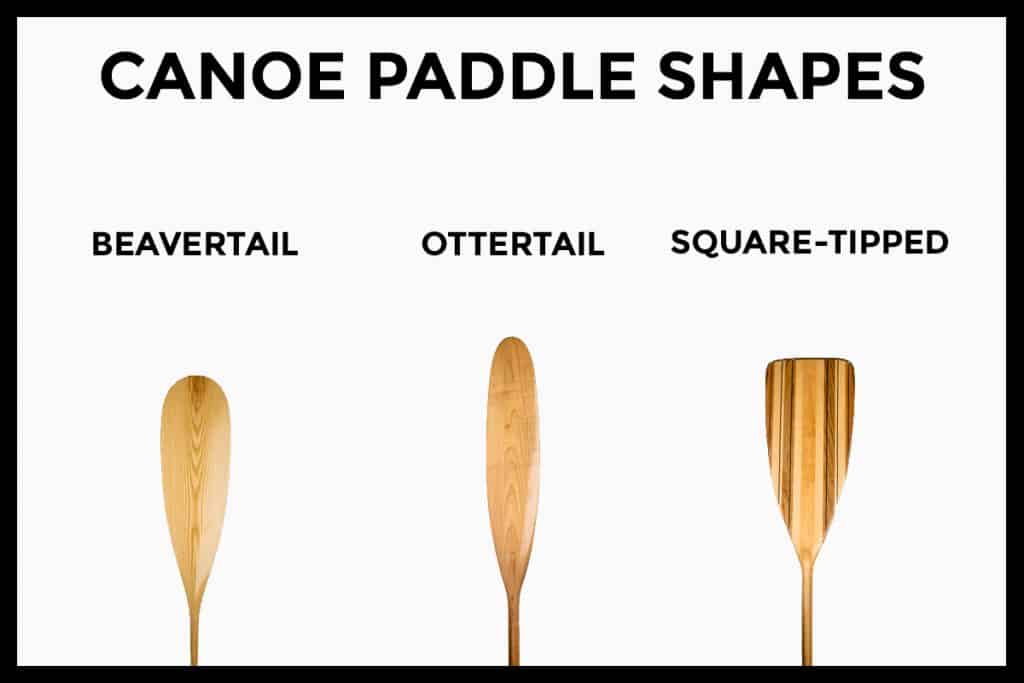
This image is property of paddlecamp.com.
Maneuverability
Kayak paddle maneuverability
Maneuverability is a key aspect of kayak paddles and plays a significant role in navigating tight spaces and executing precise movements on the water.
Kayak paddles designed for enhanced maneuverability often feature shorter lengths and more pronounced blade shapes. These characteristics allow for quicker stroke initiation and responsive handling in situations that demand swift direction changes, such as navigating through narrow waterways or maneuvering around obstacles.
The ability to effortlessly maneuver your kayak can greatly enhance the overall enjoyment of your paddling experience, providing you with the confidence to explore even the most challenging environments.
Canoe paddle maneuverability
Canoe paddles also offer maneuverability advantages that are important for effective control and navigation in different canoeing scenarios.
Paddles designed for enhanced maneuverability in canoes often have shorter lengths, enabling quick and precise strokes. This facilitates easy navigation in tight spaces, negotiating obstacles, and executing rapid changes in direction.
Depending on the canoeing style, specific blade shapes may be employed to increase maneuverability. For example, whitewater canoe paddles tend to have narrower blades, allowing for faster acceleration and more agile movements in fast-flowing rapids.
The maneuverability of a canoe paddle ensures that you have the necessary control and responsiveness to tackle various conditions and paddle confidently in different environments.
Types of Canoeing
Recreational canoeing
Recreational canoeing encompasses leisurely outings and relaxed paddling experiences in calm waters. It emphasizes enjoying the tranquility of nature and taking in the sights and sounds while paddling at a comfortable pace.
For recreational canoeing, stable and maneuverable canoes are preferred, allowing paddlers to easily explore lakes, rivers, and quiet estuaries. Recreational canoeists generally opt for versatile paddles that provide a good balance of power, control, and durability to enjoy their outings to the fullest.
Tripping canoeing
Tripping canoeing involves longer excursions and multi-day trips, often covering significant distances and carrying substantial gear or supplies. Tripping canoes are designed to accommodate the additional load while maintaining stability and maneuverability.
Canoe paddles for tripping excursions are typically lightweight to reduce fatigue during extended journeys. Paddles made from modern materials such as carbon fiber or fiberglass are favored, as they offer the best combination of performance and weight reduction.
Since endurance and efficiency are crucial during tripping canoeing, advanced paddle designs, such as bent shafts or ergonomic grips, may be employed to minimize fatigue and optimize stroke efficiency.
Sprint canoeing
Sprint canoeing is a highly competitive Olympic sport that involves racing in canoes over designated distances. Speed and precise technique are paramount in sprint canoeing, requiring paddles designed for maximum performance.
Canoe paddles used in sprint racing have specific characteristics to enhance acceleration, stroke efficiency, and control. They typically feature shorter shafts and narrower blades, allowing for rapid, powerful strokes.
To further maximize efficiency, sprint canoe paddles may employ advanced materials such as carbon fiber or materials specifically engineered to minimize resistance and enhance propulsion.
Whitewater canoeing
Whitewater canoeing entails navigating fast-flowing, turbulent rivers with rocky rapids and challenging obstacles. Whitewater canoes and paddles are designed to withstand the harsh conditions and provide the necessary control for maneuvering through complex water features.
Canoe paddles for whitewater canoeing prioritize durability and maneuverability. Reinforced blades and sturdy shafts are common features, ensuring that the paddle can withstand impacts and resist damage from rocks and other obstacles.
The maneuverability of whitewater canoe paddles is crucial for executing precise strokes and quick direction changes. These paddles may have specific shapes, such as narrower blades, to facilitate agile movements and acceleration in tumultuous water.
Understanding the distinction between kayak paddles and canoe paddles allows you to make an informed choice based on your specific needs and preferences. Whether you’re enjoying a leisurely paddle on a calm lake or challenging the rapids in a whitewater river, selecting the right paddle will enhance your paddling experience and maximize your enjoyment on the water. Happy paddling!
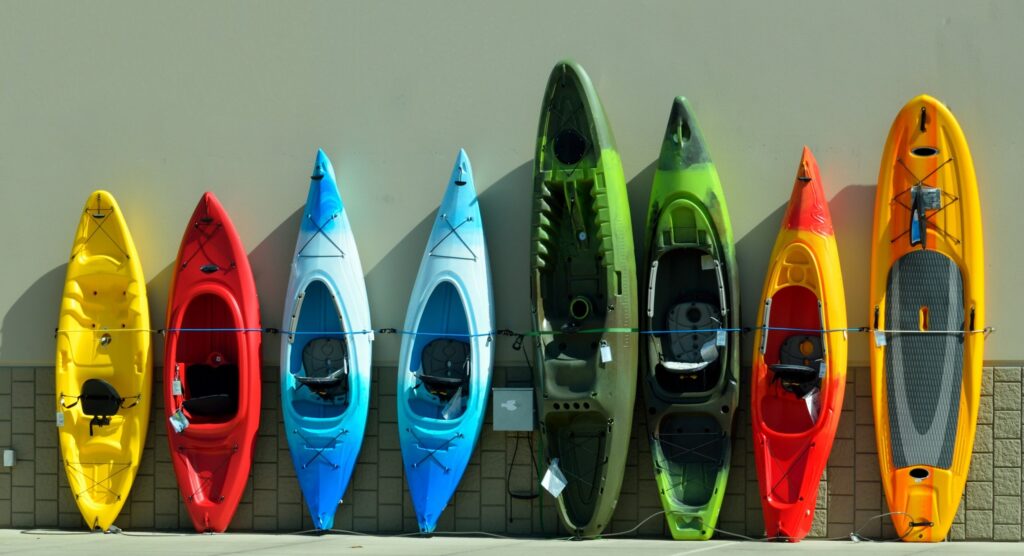
This image is property of virginiawatertrails.org.






